- How Do You Breathe?
- The Mechanics of Breathing
- Disadvantages of Mouth Breathing
- Benefits of Nose Breathing
- Breathing and Exercise Performance
- Nose Breathing Benefits In My Daily Life
- OptiO2 Sport – Nose Breathing Device
- My Experience With Nose Breathing
- How to Get Started With Nose Breathing
- Frequently Asked Questions
- Conclusion: Benefits of Nose Breathing
Breathing through your nose rather than your mouth has numerous health benefits, and can significantly improve exercise performance. In this article, I’ll explain the scientific research behind various breathing techniques and share a few practical tips and tricks for reaping the benefits of nose breathing.
Additionally, I’ll introduce you to a device — a mouthguard — that makes it more difficult to breathe through your mouth. While that might sound counterintuitive, the device encourages nose breathing and can thus improve your sleep and exercise performance.
How Do You Breathe?
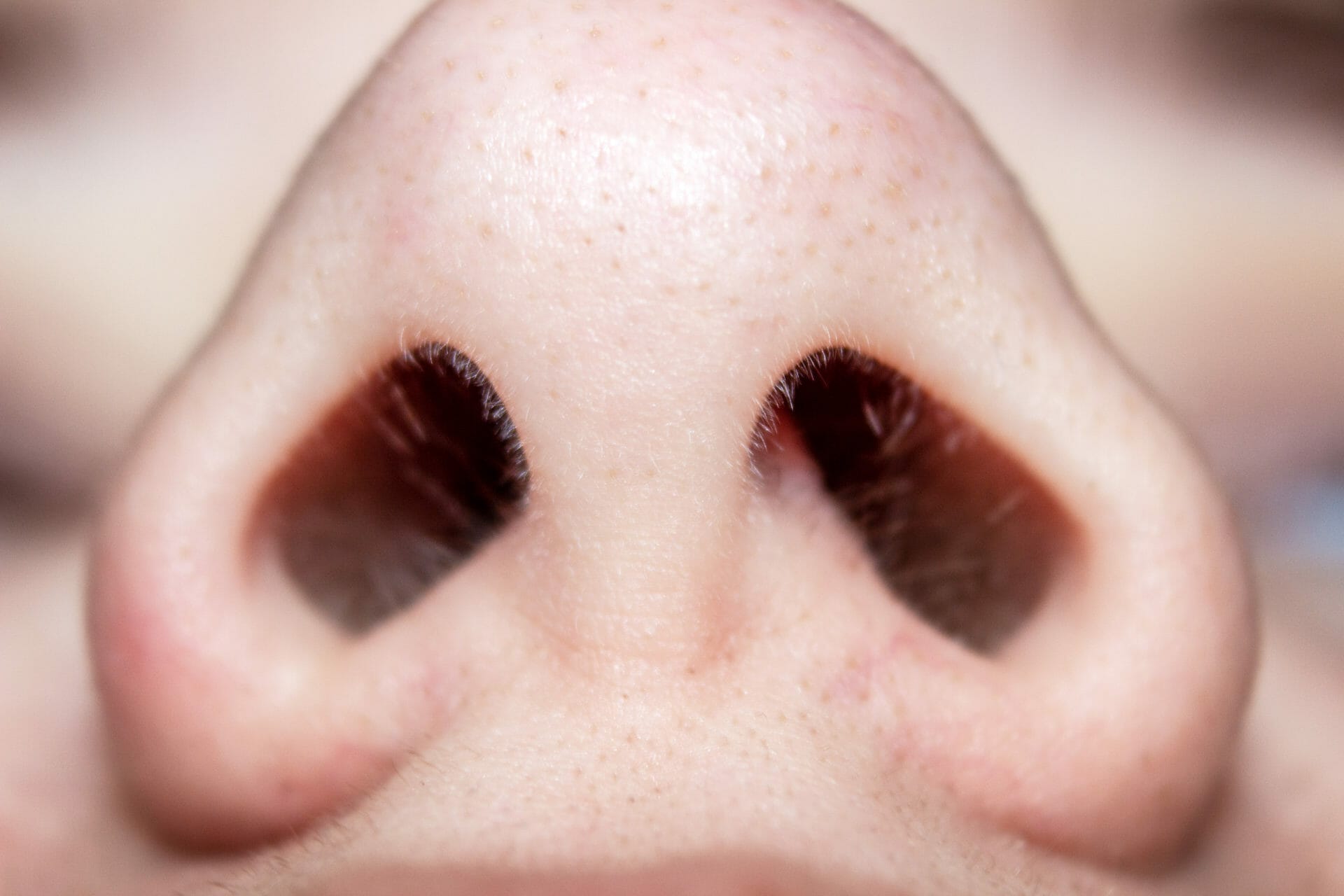
When was the last time you paid attention to your breathing? Unless you’re an elite athlete or regularly practice mindfulness, breathing exercises or yoga, I’m guessing you don’t remember.
We breathe 12 to 20 times every minute when we’re at rest. That’s 17,000 to 30,000 times per day, and it all happens completely autonomously.
Why would you want to pay attention to something that happens automatically?
The primary purpose of this article is to answer exactly that question and to help you become a proficient nose breather.
The Mechanics of Breathing
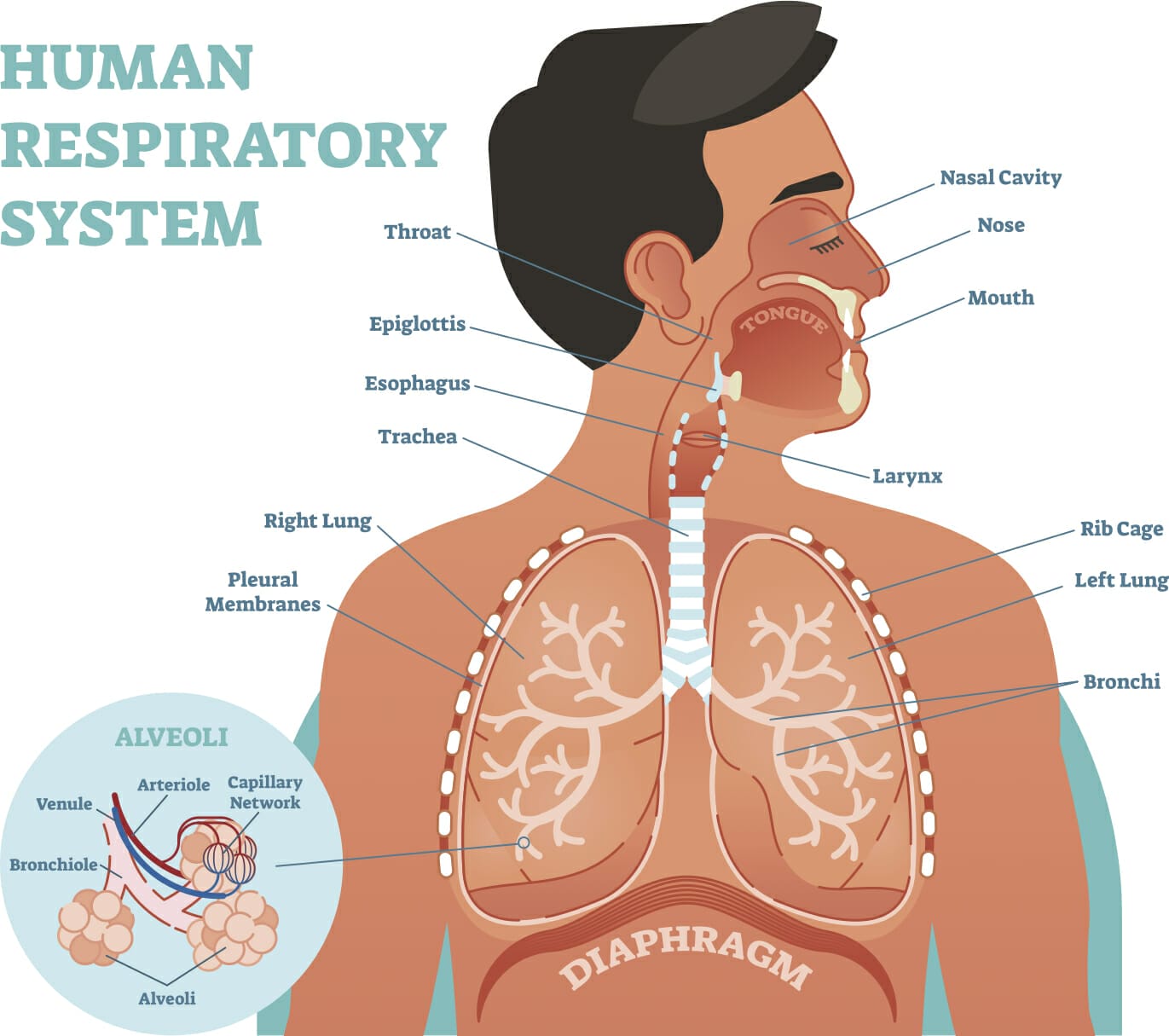
As you know, air can enter the lungs in one of two ways: via the nose or via the mouth.
While either mechanism gets air into the lungs, and thus oxygen into the bloodstream, there are some significant differences that we’ll learn about in this article.
For now, you should know that the nose is the primary organ to oxygenate the body while the mouth is meant for chewing and getting food into the stomach.
In other words, humans are nose breathers by default. But we switch to mouth breathing under “extreme” circumstances.
Back in the hunter and gatherer days, an “extreme” circumstance might have been when a sabertooth tiger attacked and we had to run or fight for our lives.
That’s because there’s a physiological connection between mouth breathing and the “fight or flight” response that we’ll get more into in a bit.
Of course, these days, most of us don’t have to worry about sabertooth tigers or other dangerous creatures. But despite that, some of us spend a lot of time in the fight or flight response mode.
That’s because we’re constantly dealing with chronic modern-day stressors that have replaced our ancestral fear factors.
Examples include bills, fear of job loss, our kids’ activities and a hundred other lifestyle factors that make us chronically anxious and stressed out.
You probably already know that chronic stress can negatively and measurably impact your health.
According to an article on Healthline, “stress and anxiety can cause a person to breathe through their mouth instead of their nose. Stress activates the sympathetic nervous system leading to shallow, rapid, and abnormal breathing.”
So let’s find out how mouth breathing fits into that picture.
Disadvantages of Mouth Breathing
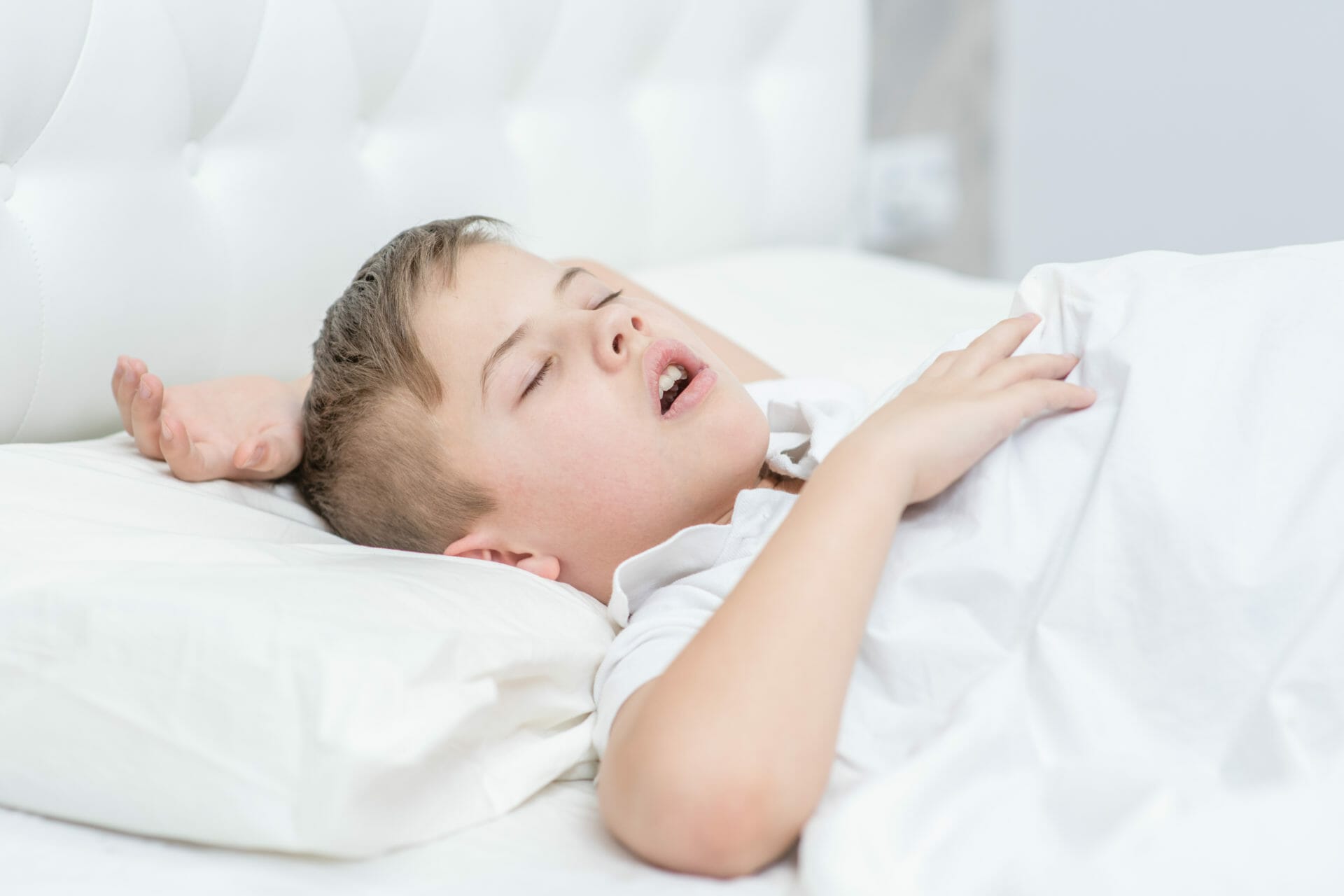
There’s an evolutionary reason why you have the ability to breathe through your mouth (remember that sabertooth tiger?). However, it’s important to understand that while mouth breathing is advantageous under certain circumstances, you don’t want to be a chronic mouth breather.
That’s because chronic mouth breathing has numerous disadvantages, including:
- Mouth breathing activates the fight or flight response.
- The mouth can’t filter and condition inhaled air.
- Mouth breathing causes dry mouth, which can lead to gum disease and bad breath.
- It increases the risk of throat and ear infections.
If your kids are mouth breathers, you should know that chronic mouth breathing can lead to physical abnormalities (such as long, narrow faces or poor posture) as well as cognitive issues including poor growth, lower academic performance and sleep disorders.
You can read more about the potential issues associated with mouth breathing in children in this article.
For the purpose of this blog post, I’d like to focus on the negative side effects of mouth breathing on the nervous system and exercise performance.
As we’ve discussed already, mouth breathing is closely connected to the fight or flight response in humans.
One of the reasons for that is that mouth breathing pulls air into the upper (superior) and middle lobes of the lungs, which are covered in sympathetic nerve endings.
In contrast, mouth breathing rarely pulls air into the lower (inferior) lobes, which have a lot of parasympathetic nerve endings.
The sympathetic branch of the nervous system is responsible for, among other things, the fight or flight response. On the other hand, the parasympathetic nervous system is responsible for our rest-and-digest and feed-and-breed behavior.
If you’ve read my review of WHOOP or the best sleep trackers, you might remember the term “heart rate variability” or HRV, which is an indirect indicator of how the nervous system is doing. In particular, it tracks how the sympathetic and parasympathetic branches of the nervous system are competing. Nose breathing is one of the strategies that can increase your HRV by supporting the parasympathetic nervous system.
Many people use their chest to pull air into their lungs through the mouth. Chest breathing — as opposed to belly breathing — often leads to shallower breaths that don’t pull as much oxygen into the lungs and thus result in lower blood oxygenation.
Additionally, air that enters and exits the mouth can do so at a relatively rapid rate, which limits the time the lungs have to extract oxygen from it. That further impairs the oxygen absorption of the body.
Benefits of Nose Breathing
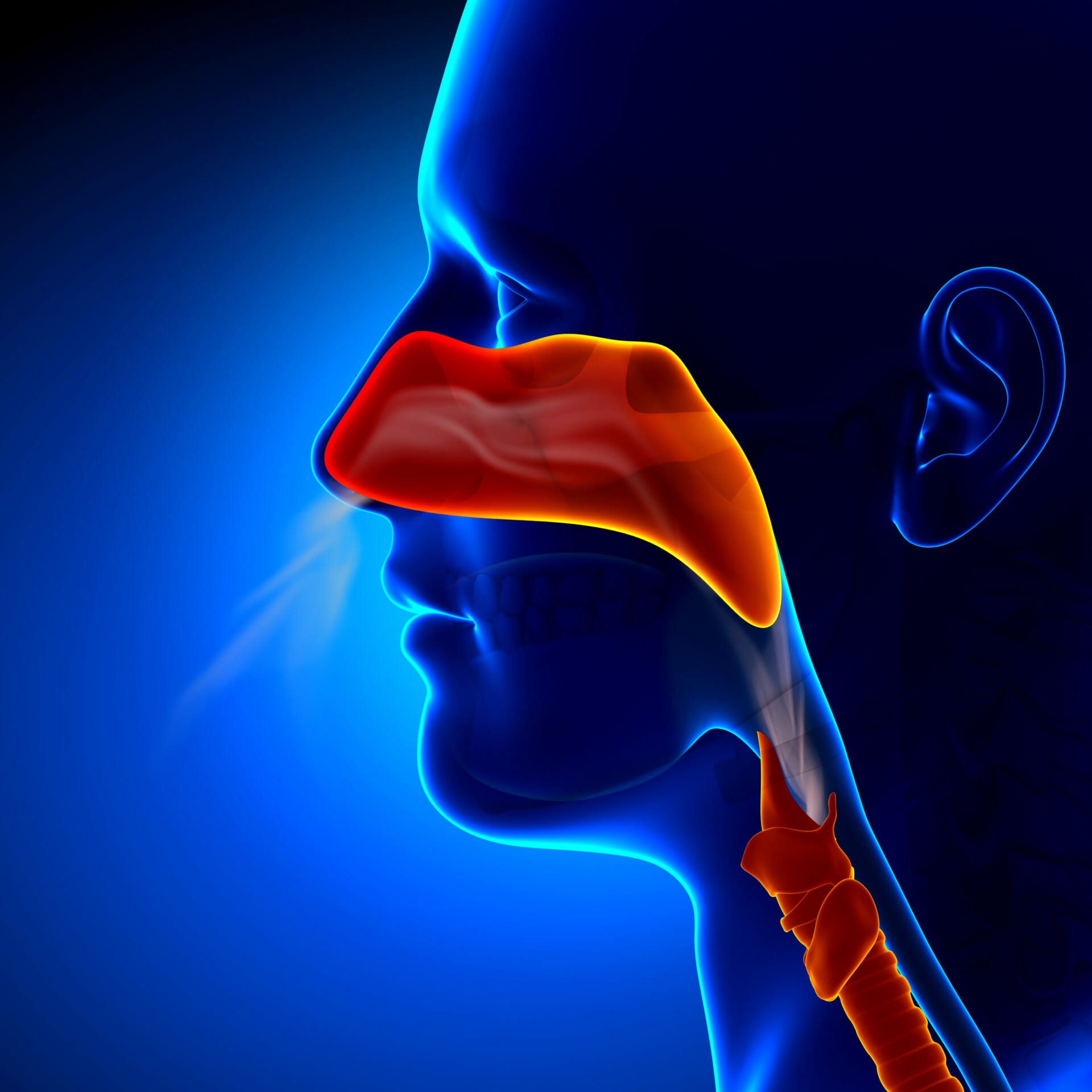
Breathing through your nose has several scientifically-proven health benefits that make it a skill worth acquiring, including:
- The nose moisturizes the inhaled air to prevent dryness of the lungs and bronchial tubes.
- The tiny hairs in your nose filter out pathogens, dust and pollen, and prevents them from getting into your body.
- Nose breathing activates the parasympathetic nervous system, including the vagus nerve, which reduces stress and anxiety.
- Breathing through your nose increases oxygen absorption because it forces you to breathe at a slower rate.
- Nose breathing modulates the limbic oscillations, the cognitive functions, and the motor functions of the cortex at a higher rate than mouth breathing.
Nose Breathing Humidifies and Filters Air
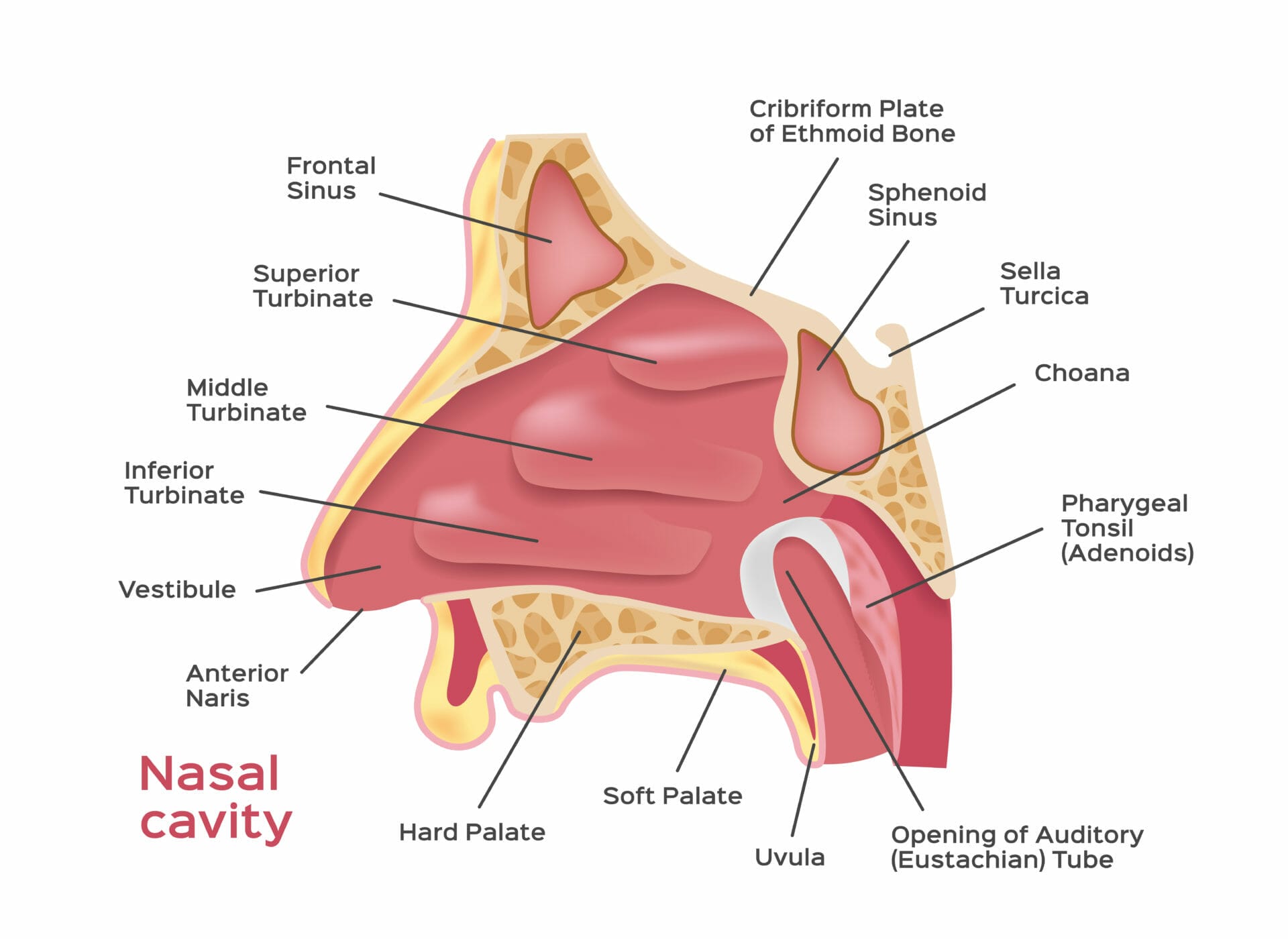
One of the primary benefits of nose breathing is that the nose acts as a filter and humidifier.
That means the turbinates and tiny hair in your nose can prevent unwanted particles from entering your body. That includes dust, pollen and even pathogens like viruses and bacteria.
As a result, by breathing through your nose you might get sick less often and reduce the impact of pollen on your body.
Additionally, the nose also modulates the temperature and humidity of the inhaled air to prevent your lungs and bronchial tubes from getting too dry.
Last but not least, the nose produces nitric oxide, which improves the lung’s ability to absorb oxygen.
Impact of Nose Breathing on Nervous System
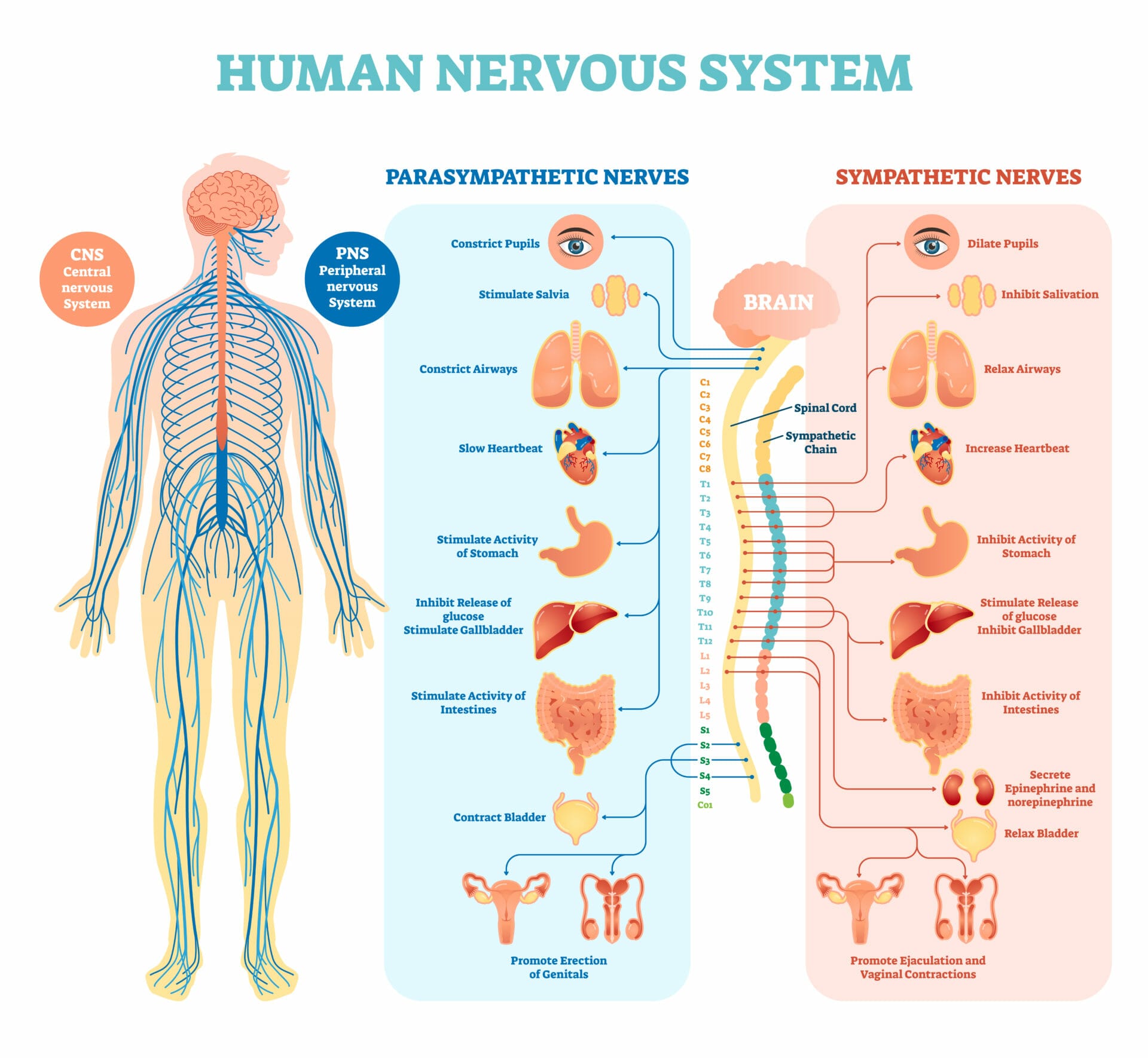
Studies have shown that breathing has a significant impact on the nervous system and the vagus nerve.
For example, taking slow, deep breaths activates the vagus nerve, which contains a large amount of parasympathetic fibers. Doing so can slow down your heartbeat, and reduce stress and anxiety.
What’s even more exciting is that nose breathing can have a measurable impact on the cognitive and motor functions of your cerebral cortex (the outermost layer of your brain), which is responsible for processing the information from your five senses.
Increases Oxygen Absorption
When you breathe through your nose, the nostrils limit how much air can enter your lungs.
That might lead you to believe that nose breathing is an inferior way to oxygenate your blood. However, the nose produces nitric oxide, which increases the lungs’ ability to absorb oxygen.
Additionally, because air exits your lungs more slowly through your nose when you exhale, they have more time to extract oxygen from it.
Both factors combined lead to better and more efficient oxygen absorption when you breathe through the nose as opposed to through the mouth.
Breathing and Exercise Performance
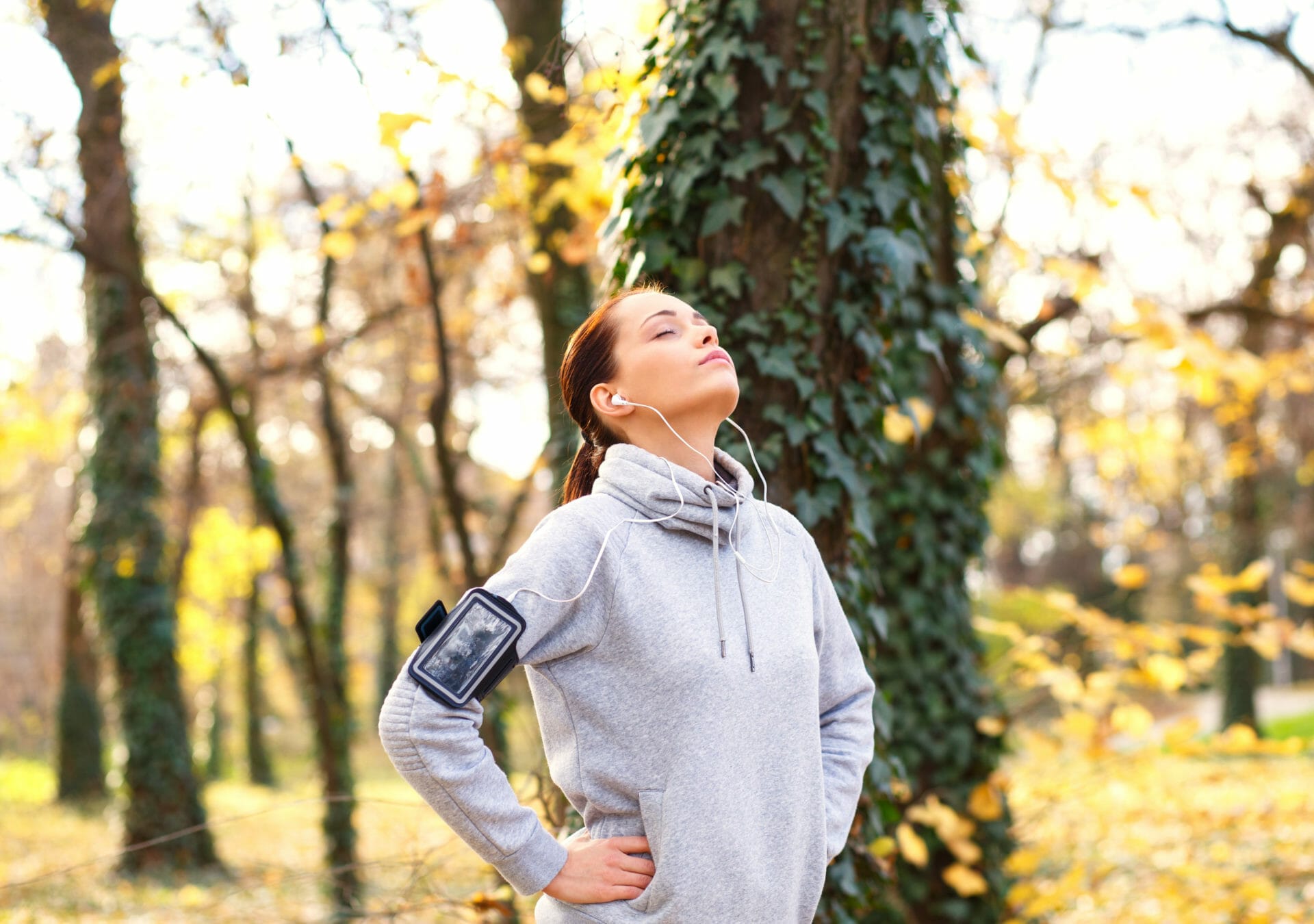
Now that you understand the basic and physiological differences between nose breathing and mouth breathing, let’s switch gears and discuss their impact on exercise performance.
If you’ve been following this blog for a while, you probably know that I do CrossFit and consider myself a serious fitness enthusiast.
I don’t regularly participate in competitions, but I’m competitive and I enjoy pushing myself — both mentally and physically.
That’s why I’m always on the lookout for ways to hack my performance. That’s especially true if I can do it in a way that also benefits and supports my overall health and fitness goals.
Nose breathing is one of those hacks that can benefit me inside and outside the gym, which is why I’ve been making an effort to fully embrace it.
I used to be a sprinter and I was conditioned to accelerate as fast as I could and then hold it until the finish line. While that strategy works well if you only have to run 100 meters, it quickly falls apart during a 30-minute CrossFit workout.
So I had to learn the hard way to pace myself and not redline at every workout. It wasn’t until recently that I’ve struggled with finding the “right pace” for a given workout. If you do CrossFit, you can probably relate to that dilemma.
Nose Breathing as a Pacemaker
Funnily enough, nose breathing has become a natural pacemaker for me because there’s only so much air that can enter and exit my nostrils.
In other words, as long as I can breathe through my nose, I can sustain the pace for extended periods. Once I feel the urge to start breathing through my mouth — to get more air volume in — I know that I’m on borrowed time.
So what I’ve started doing is focusing on nose breathing for as long as I possibly can. By doing so, I not only force myself to work out at a sustainable pace, but I also enable my lungs to extract as much oxygen as possible from the air I inhale.
Of course, the proper (nose) breathing technique is an acquired skill that I have to continuously practice to improve.
Nose Breathing to Keep Your Heart Rate in Check
The other benefit of nose breathing and maximizing oxygen absorption is that my heart beats a bit slower.
That’s important if I work out near my threshold and, in particular, because I’m on a ketogenic diet where crossing that threshold means switching to glucose as my primary source of fuel — and I don’t have much of that to work with.
Nose Breathing to Improve Recovery
At the end of my most intensive workouts, I’m breathing through my mouth — simply because I can’t sustain nose breathing for very long (yet). However, as soon as the workout is done, I immediately switch back to nose breathing.
Why?
I do that because it helps me recover quicker by slowing down my breathing and heart rate. To learn about other tricks I use to improve my recovery, check out this article I recently published.
Nose Breathing Benefits In My Daily Life

Since I’ve started paying attention to the way I breathe, I’ve embraced nose breathing in my everyday life.
For example, when I walk up the stairs at the airport with my suitcase in hand, I breathe through my nose only. That way, I’m much less out of breath than if I would breathe through my mouth. Plus, it makes me look much fitter than someone who is hyperventilating after climbing a few flights of stairs.
My wife and I recently spent five relaxing days on the beach in Tulum, Mexico. Usually, we prefer active vacations, including tours and excursions. This time, we decided to do nothing but eat, sleep and enjoy the beach.
To get the most out of that vacation, I practiced nose breathing at every opportunity. It helped me to wind down and forget about everything else we had going on at home.
Breathing as a Way to Relax
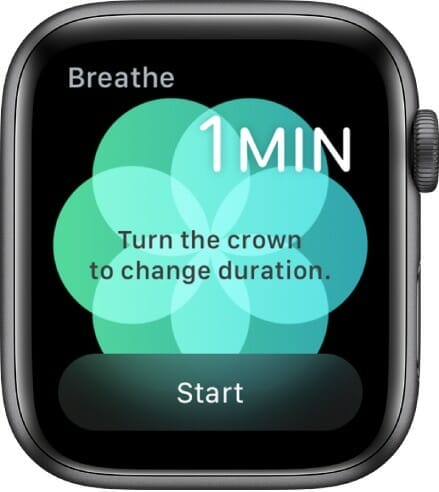
Life is stressful and filled with dozens of things that demand our attention. So it’s easy to get anxious and overwhelmed.
That’s why I take a minute to breathe (using the Breathe app on my Apple Watch) every time I go pee. I just sit down and take a few deep breaths and watch my heart rate go down.
I first thought Apple’s Breathe app was a silly gimmick, but I’ve noticed that I feel much less stressed when I use it a few times a day.
Additionally, I rely heavily on nose breathing during times of “extreme” stress.
I have a condition called vasovagal syncope, which means that under “extreme” circumstances — such as jumping out of an airplane or getting an injection at the dentist — I can pass out.
That can happen because when my body experiences an alarm response, my vagus nerve lowers my blood pressure so much that my brain gets temporarily deprived of oxygen and I pass out. It has only happened a few times in my life, but often enough that I know what the onset of it feels like.
The last time I experience that fight or flight response was when I got my vasectomy. Specifically, when the surgeon approached my unmentionables with a huge needle to numb the area.
When my hands started tingling and my vision narrowed, I knew that it was time to counter the response of my nervous system with deep nose breathing.
It worked. After two minutes of focused breathing, I could relax and my heart rate normalized.
Now you know more about the status of my reproductive system than you asked for. But I wanted to share it as an example of how mindful nose breathing can help in uncomfortable or critical situations where breathing might become shallow and uncontrolled.
Remember, nose breathing activates your parasympathetic nervous system, which counteracts the sympathetic branch. The latter is overactive in fight or flight situations.
Breathing to Fall Asleep Quicker
As I touched on in my sleep article, I count my breaths to help me fall asleep quicker. It seriously works like magic 90% of the time.
OptiO2 Sport – Nose Breathing Device
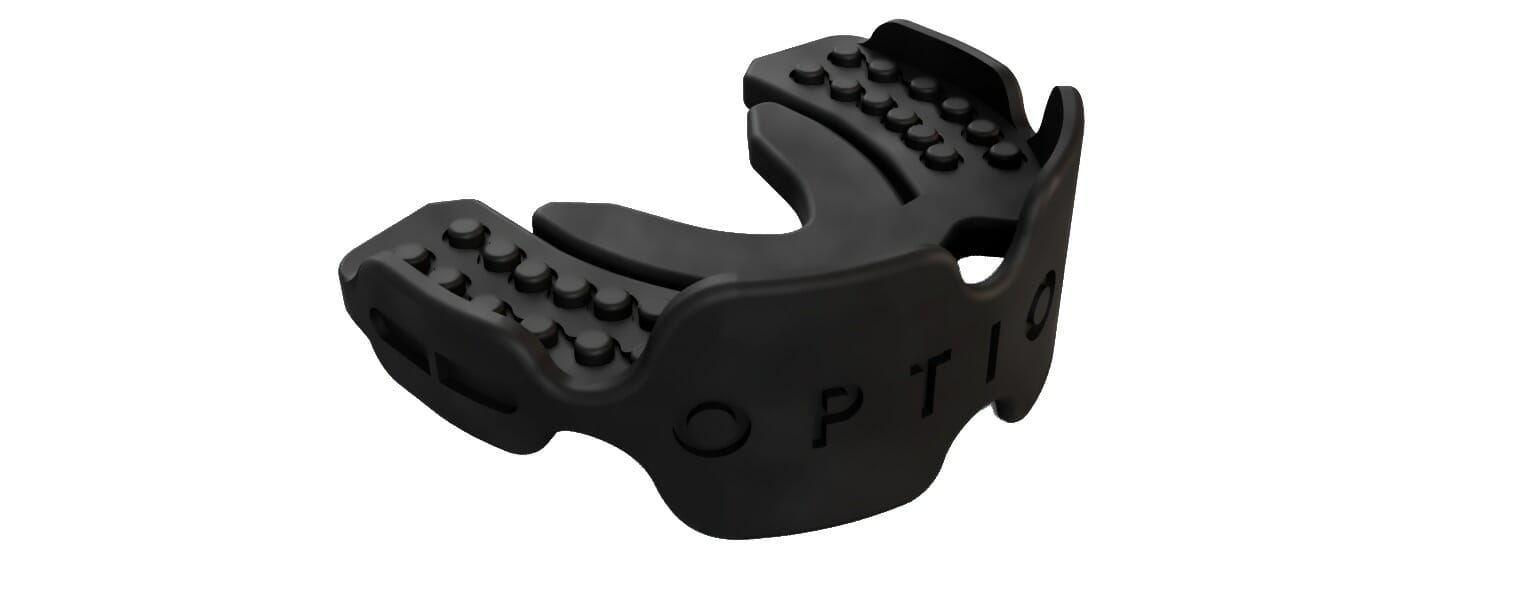
When I decided to leverage nose breathing during workouts, I had to keep reminding myself to actually do it.
I remember the first workout where I walked into the gym breathing only through my nose, but as soon as the warmup started, I was back to mouth breathing.
That’s when I decided to start using a special device from OptiO2 Labs. The device looks like a mouthguard that “enforces proper breathing technique by allowing nasal airflow only while opening the airways with an elevated tongue and forward jaw.”
In other words, it makes it harder (but not impossible) to breathe through your mouth. I started wearing the OptiO2 Sport so I wouldn’t have to remember to keep my mouth closed.
Besides enforcing the proper breathing technique, the device also acts as a classic mouthguard that can protect your teeth during weightlifting and strength sessions. However, it’s not meant for contact sports.
Note: I don’t wear this device for every workout because I’ve gotten used to keeping my mouth closed for as long as possible. But it has undoubtedly helped me getting used to nose breathing during workouts.
Also, I’m a teeth grinder — or at least, I used to be. That’s why I wear a mouthguard at night. Going forward, I’ll keep OptiO2 in my backpack so that I can use it for traveling. That means I have one less thing I can forget when packing my suitcase.
If you want to give OptiO2 a try, make sure to use discount code MK10 and get 10% off your purchase.
My Experience With Nose Breathing
I’m sold on the benefits of nose breathing and I practice it all the time. I’ve also become much more conscious about how I breathe, and I frequently catch myself breathing through my nose.
The one issue I’ve been struggling with a bit is my enlarged turbinates — the small structures inside the nose that trap dust and humidify the air that passes through the nostrils.
Believe it or not, my big nose isn’t helping as much as you might think!
The good news is that those turbinates rarely pose an issue outside of the gym. While I’m at rest or lying on my back, I can breathe without any issues.
Only when I perform exercises where where gravity pushes blood into my nasal tissue — such as a bear crawl — do I feel like I’m not getting enough air through my nose.
I’ve also noticed that if I’m congested, sleeping on my side impairs airflow through my nose. But that’s OK because I usually sleep on my back.
Tips to Improve Nasal Airflow
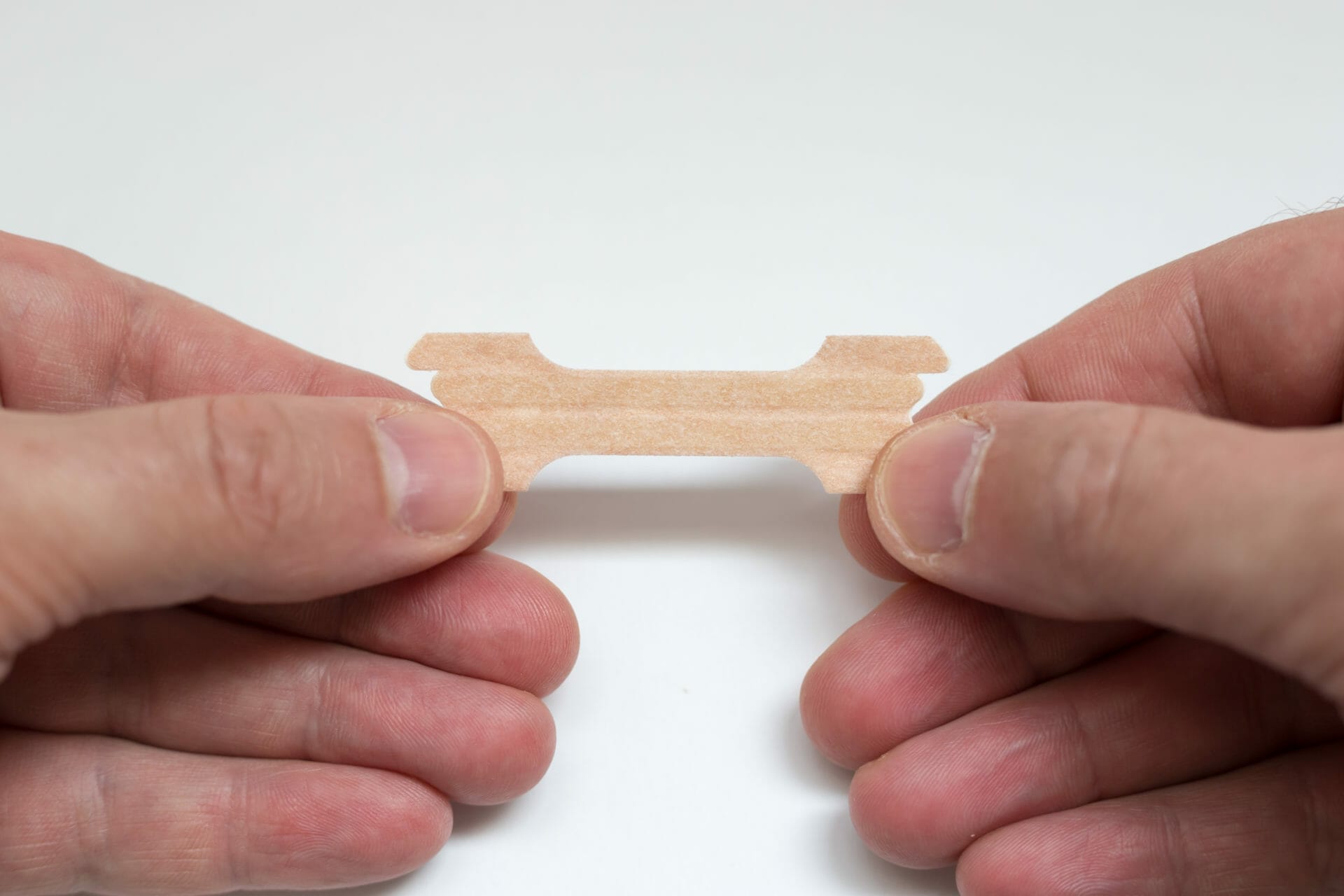
One of the things I regularly do — especially during pollen season and winter — is flush my nose with saline spray or a saline solution. Doing so helps remove dust, mucus and other particles that can impair airflow.
The other thing I’ll try are nasal strips, which can improve airflow — especially during exercise, when the blood vessels in your nose might be enlarged or when you have a stuffy nose.
When I’m really congested, I use a non-habit forming nasal spray that contains fluticasone propionate (a steroid).
What I wouldn’t recommend is using traditional over-the-counter nasal sprays, such as Afrin, because they’re habit-forming and can do more harm than good. I only use them in extreme cases, like when I’m sick and my nose is so congested that it impairs my ability to sleep.
If that’s the case, I use something like Afrin once every 24 hours (before going to bed). During the day, I switch to Sudafed — a pill that contains phenylephrine HCL. Just don’t take those pills too close to bedtime, because they can keep you awake.
How to Get Started With Nose Breathing
Getting started with nose breathing is fairly simple. Sit down, close your mouth and calmly inhale through your nose. Make sure not to raise your chest, but rather to use your belly to pull air into your lungs. Imagine having a balloon in your belly that gets inflated every time you inhale.
To exhale, simply relax and let the air slowly escape through your nose. Try to take longer to exhale than to inhale. I also recommend holding your breath for a few seconds before exhaling. That allows your lungs to absorb as much oxygen as possible.
Once you feel comfortable belly-breathing through your nose at rest, try it while walking or while performing other non-strenuous activities, such as cooking or typing on a computer.
As you begin feeling more comfortable with your newly-acquired breathing skills, start incorporating them into your fitness routines. I recommend utilizing nose breathing during warmups at first. Since your heart rate is usually lower at that point, it’s easier to maintain the nose breathing regimen.
The more you practice nose breathing, the more proficient you will get. I’ve been doing it for a few weeks and I’ve already managed to get through a couple of CrossFit workouts without breathing through my mouth — also thanks to my OptiO2 mouthguard, which gave me no other choice.
At the time of this writing, it’s fall and cold in Atlanta. And thanks to the constant changes in temperature, my nose runs more often than usual. That doesn’t make it easy to practice nose breathing, but I figure if I can do it now it’ll be much easier come summer.
Frequently Asked Questions
Diaphragmatic breathing, or belly breathing, is a deep breathing technique. You can practice it by pulling air into your lungs by contracting your diaphragm instead of raising your chest.
Breathing through your nose can definitely help you fall asleep quicker. Plus, nose breathing activates the parasympathetic nervous system, which is responsible for restorative and digestive functions in your body.
Additionally, mouth breathing can increase the occurrence of snoring and it can worsen the symptoms in people who suffer from sleep apnea.
So yes: nose breathing can help you get a good night’s sleep and wake up refreshed and recharged.
Some people suggest taping your mouth shut. That way, you’re forced to breathe through your nose. While I’m sure tape is effective, it’s also uncomfortable and it can irritate the skin.
I recommend using a mouth guard instead, such as the OptiO2 I mentioned above.
Conclusion: Benefits of Nose Breathing
If you’ve never paid attention to how you breathe, I strongly encourage you to do so, and to make an effort to breathe through your nose as much as possible.
Nose breathing has numerous scientifically-proven health benefits that can make a real difference for your overall well-being.
For fitness enthusiasts and professional athletes, being proficient in proper breathing techniques can be the difference between winning and losing. That’s why so many competitive athletes practice and hone their breathing skills.
Personally, nose breathing is one of those things that I wish I had known more about sooner. Now that I’m more aware of how to breathe properly, I pay extra attention and encourage others to try it out as well.
While I haven’t mentioned anything to my kids yet, they have noticed that mom and dad “breathe” several times throughout the day using the Apple Watch. So now they come and ask if they can breathe with us. We certainly encourage that, even if they don’t fully understand the concept yet.
Have you tried nose breathing yet? If so, what’s your experience with it? Has it helped you to relax or perform better at the gym? Let me know by leaving a comment below.

Michael Kummer is a healthy living enthusiast and CrossFit athlete whose goal is to help people achieve optimal health by bridging the gap between ancestral living and the demands of modern society.



Thank you
You’re most welcome!
Your article is Easy to understand and apply, feeling better all day long.
Thanks, Brian
I appreciate the feedback, Brian!
Hi Mike. I was searching for an article on NO and came across yours. Nicely written and broad in scope. Enjoyed it! Read about your turbinates and wondered if you have tried Cranial Facial Release (CFR). Many have used it for athletic performance, but typically it’s sought after for apnea, chronic sinusitis, head trauma, chronic headaches. Check it out and let me know what you think and if you decide to try it tell me how it affects your turbinates and breathing. I’ve had great results with it. http://www.cranialfacialrelease.com
Thanks, I will check it out!
This article is thorough and informative without being overwhelming in details and terminology. Thank you for sharing your knowledge.
Thanks, Chaya, I appreciate the feedback!
I have very severe emphysema on supplemental oxygen and I am a chronic mouth breather. I’ve been researching the subject of nose breathing and have been diligently practicing. I’ve noticed a difference in my levels of shortness of breath and recovery when doing nose breathing exclusively. Enjoyed your article.
Thanks for the feedback, Cheryl, I appreciate it!
It is so much better breathing thru the nose, instead of the mouth, feel refreshed now, and love it. At first was raising my shoulders, but, now, i feel the belly going up and down. Thanks so much.
Darshan
I was very focused breathing through my nose during my days of martial arts (about a decade and some change ago). Having left that hobby to focus on family and career, my nose breathing focus left with it. Interestingly, I remembered the benefits of breathing through my nose, be it during working out or just taking a moment during the day to relax. I just started trying to implement it in my workouts as described within your article. It’s amazing how many times I just forget during the entirety of the workout. But when I do, I’m also amazed at how quickly my body “demands” for air to start coming through the mouth.
Great article Mike!
Thanks Bryan, I much appreciate the feedback and perspective!